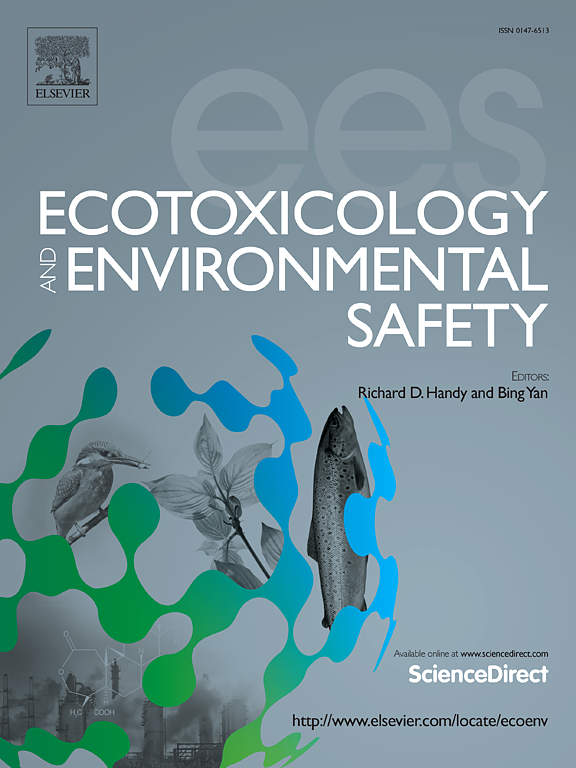Acute exposure of perchlorate on zebrafish larvae: Neurotoxicity during development
IF 6.2
2区 环境科学与生态学
Q1 ENVIRONMENTAL SCIENCES
引用次数: 0
Abstract
Objective
This study aimed to assess the acute developmental toxicity of perchlorate exposure and identify its manifestation of neurotoxicity in zebrafish (Danio rerio) model.
Methods
Zebrafish larvae were exposed to sodium perchlorate at early developmental stages and the phenotypes of various developmental abnormalities were observed and recorded. Neurodevelopmental toxicity has been studied in particular in terms of central nervous system apoptosis, peripheral motor abnormalities, and abnormal autonomic motor behavior. Samples were processed for pathological, transcriptomic, and PCR analyses.
Results
Acute exposure of zebrafish larvae to perchlorate resulted in developmental toxicity in a concentration-dependent manner. Heart rate abnormality (33 %), slow blood flow (37 %), abnormal size of liver (23 %), delayed yolk absorption (70 %), and abnormal body pigmentation (100 %) were observed in the 3.83 mg/mL group. Heart edema (10 %), heart rate abnormality (60 %), slow blood flow (67 %), abnormal size of liver (77 %), delayed yolk absorption (100 %), abnormalities in intestinal morphology (30 %), abnormal body pigmentation (100 %), and shorter body length (47 %) were observed in the 4.03 mg/mL group. Developmental neurotoxicity was characterized by brain apoptosis, damage to the central nervous system (P < 0.01) and peripheral motor neurons (P < 0.0001), and reduced autonomous motor distance (P < 0.01). Transcriptomic analysis revealed that c3a.1, c5, fga, fgb, and fgg were upregulated in the complement and coagulation cascades, and the mRNA levels of c3a.1, dusp1, slc2a6, purba, and klf9 were found upregulated in PCR.
Conclusion
Acute perchlorate exposure on zebrafish larvae caused various developmental toxicity in a concentration-dependent manner, notably neurotoxicity. We believed the immunological and inflammatory responses were involved.
求助全文
约1分钟内获得全文
求助全文
来源期刊
CiteScore
12.10
自引率
5.90%
发文量
1234
审稿时长
88 days
期刊介绍:
Ecotoxicology and Environmental Safety is a multi-disciplinary journal that focuses on understanding the exposure and effects of environmental contamination on organisms including human health. The scope of the journal covers three main themes. The topics within these themes, indicated below, include (but are not limited to) the following: Ecotoxicology、Environmental Chemistry、Environmental Safety etc.

 求助内容:
求助内容: 应助结果提醒方式:
应助结果提醒方式:


